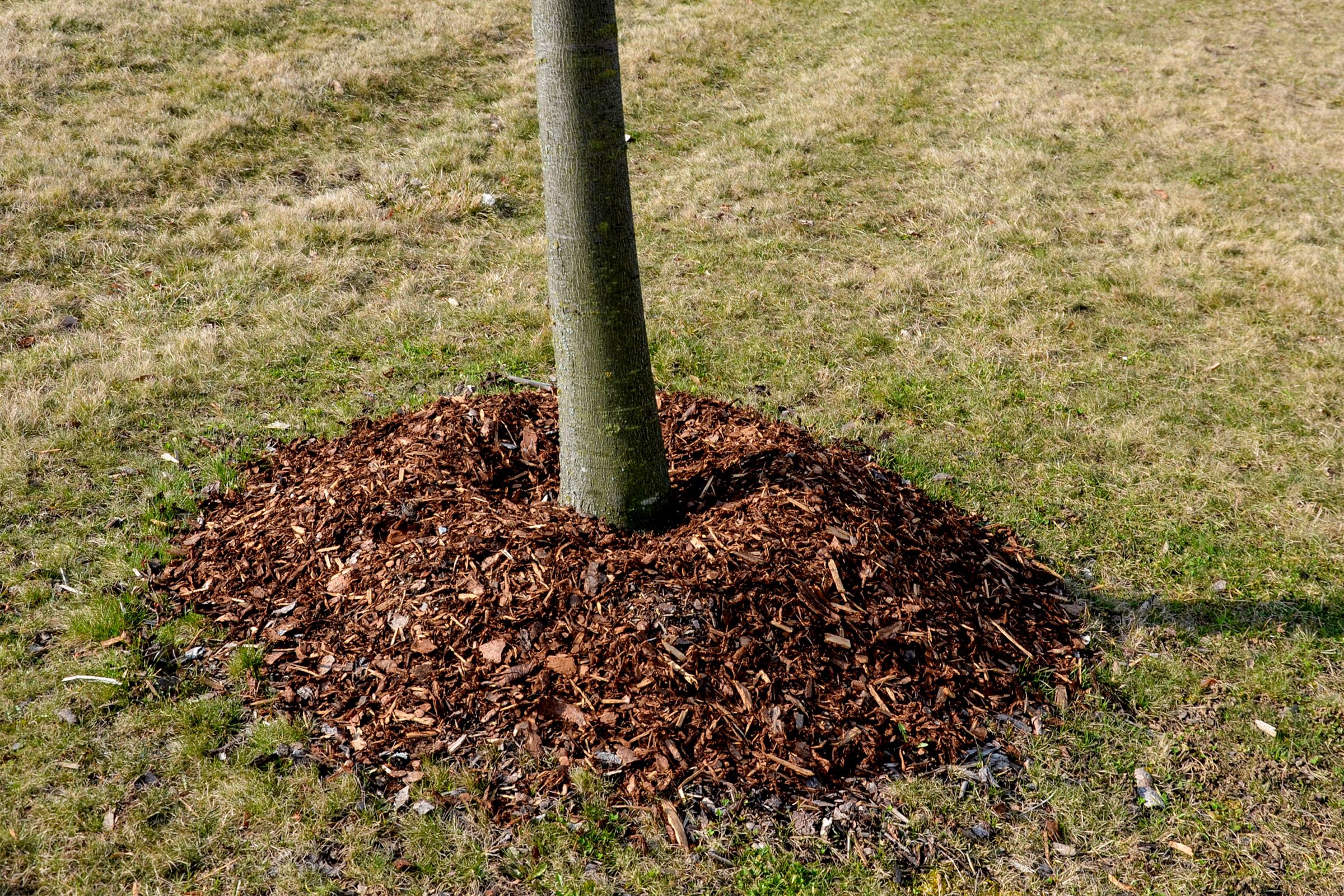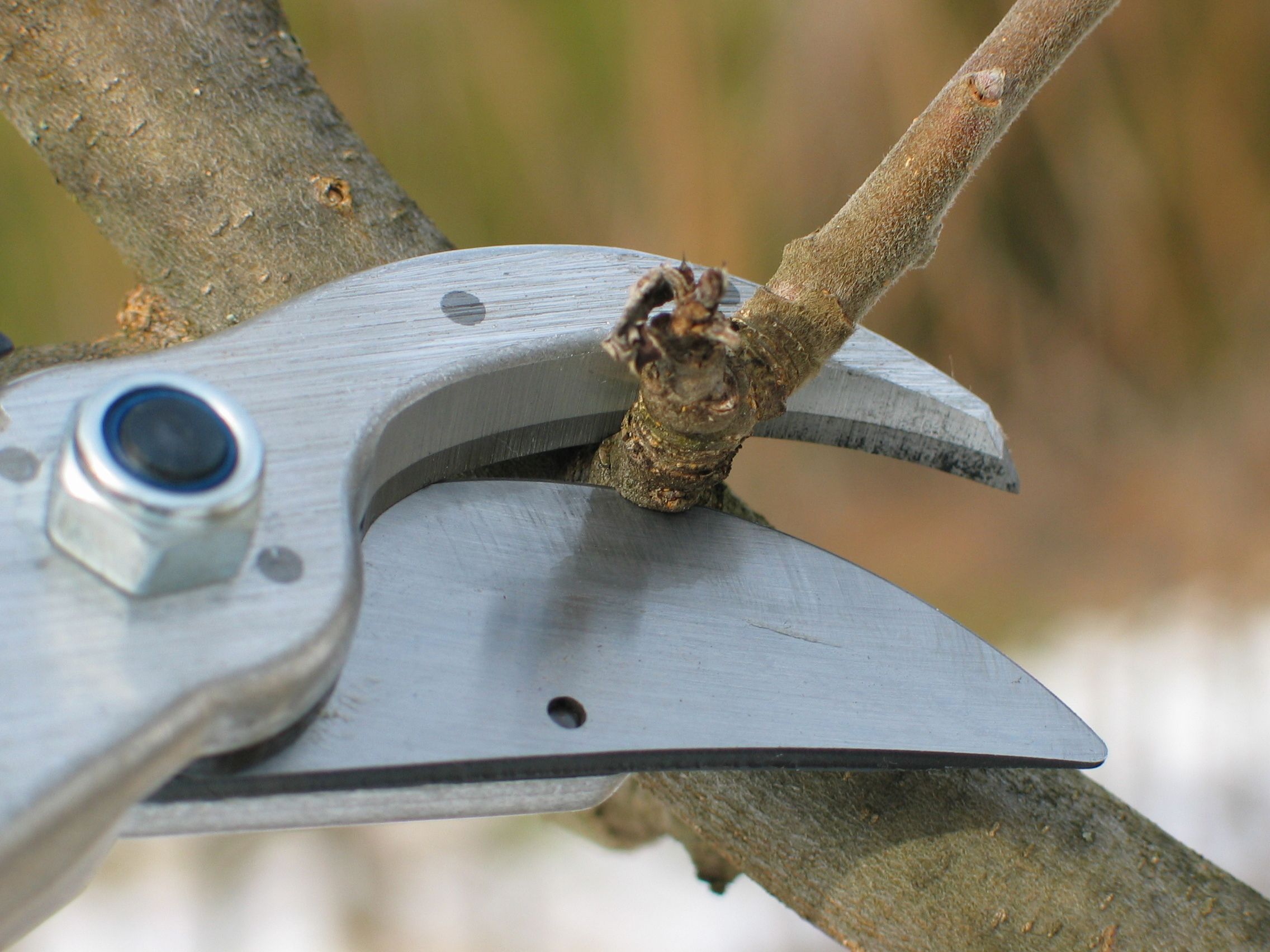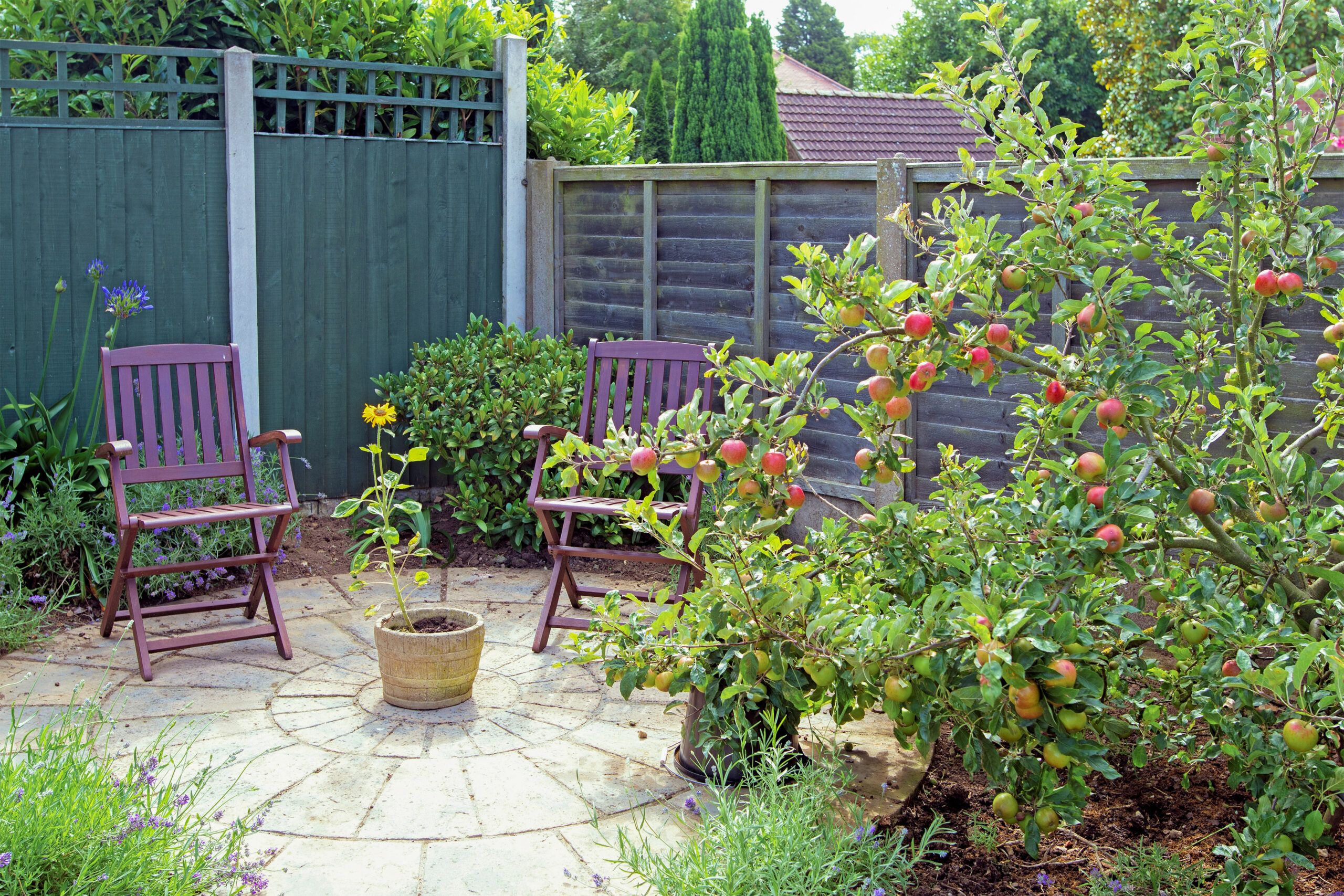Caring for fruit trees involves four key steps: watering, mulching, fertilizing, and pruning. Mastering these areas will keep your trees at a manageable height while producing abundant fruit. Below, Tom Spellman of Dave Wilson Nursery, one of the largest growers of fruit trees in the country, breaks down his checklist for getting the most out of your trees.
Watering a Fruit Tree
Before planting a fruit tree, Spellman suggests soaking its root ball in water, fully saturating it. After planting, use a hose to soak the roots, collapsing any air pockets. It can take up to six watering sessions, spread throughout the first day of planting, to thoroughly drench the soil around the root ball.
After initial watering, check the soil’s moisture level with a moisture meter to determine how much and how often to irrigate, which changes depending on the season. Using the moisture meter, probe the soil at the drip line, which is underneath the tree’s outermost branches, in a few spots. Spellman likes to check the soil 18 and 36 inches away from the trunk at different depths after clearing away any mulch.
At sunrise, water the tree from the drip line out, and about 1 or 2 feet away from the plant, until the meter reads moist. Plan on taking readings at least once a week during the growing season.
It’s difficult to base the watering schedule on visual cues alone. “The signs that a tree is over-watered look very similar to ones that it needs water,” Spellman says. “In both cases, the foliage droops and drops because the roots aren’t taking up moisture.”
Mulching the Base of a Tree

A layer of mulch around the base of the tree does more than moderate soil temperatures and moisture while blocking weeds. The right kind of mulch can boost the biodiversity in the soil, which promotes root growth.
Spellman says a 4- to 6-inch-thick layer of mulch is ideal, consisting of as many different types of organic material as possible. His rule of thumb is that no one material—compost, wood chips, grass clippings, shredded leaves, pine needles, or wood nuggets—should be more than 10%–20% of the final volume of mulch.
Use an online calculator to determine how much volume you need, then mix together bags of varied materials, keeping the best-looking mulch, such as wood chips, to spread as the top layer. Keep the mulch about 6–8 inches away from the bark to prevent rot.
When done correctly, mulching can significantly improve the health and productivity of your fruit trees.
Fertilizing Your Fruit Tree
Spellman uses specific fertilizer formulations based on what he wants from the tree. For the first two or three years after planting, he focuses on growing the tree to a mature height, not producing fruit. For that, he uses a fertilizer consisting of a nitrogen (N) level that is two or three times higher than the phosphorus (P) and potassium (K), such as a 16-4-8 blend focusing on vigorous green growth.
Feed the tree according to the directions on the bag until the tree reaches a manageable height, around 7 1/2–8-feet tall. Pruned to stay at that height, a peach tree produces about 50 pounds of fruit over two weeks, not the 350 pounds a 20-foot-tall version yields in a commercial orchard.
Once the tree reaches a size that’s easy to maintain, switch to a fertilizer that supports developing roots, flowers, and fruit. Spread a blend that has a nitrogen level that is two or three times lower than the phosphorus and potassium, such as a 3-12-12, so you don’t spend time pruning unwanted growth. Feed in early spring and midsummer.
Growing a fruit tree is a long-term project and not one you can speed up by spending more money on more mature stock. A 7-year-old tree might provide a few more pieces of fruit faster than a 2-year-old one, but what really makes a difference is the time that the plant has spent establishing itself in your yard. Normally, it takes about three years for a tree to acclimate to your conditions before it approaches peak fruit production.
Pruning a Fruit Tree

Spellman does most of his pruning during two sessions. He controls the overall size of the tree in the summer by cutting off any branches that extend beyond the established habit.
This is also a good time to spray the tree with a garden hose fitted with a high-pressure sprayer. The blast of water is enough to clear dust, cobwebs, aphids, and scale from the tree, but not so strong it will damage foliage.
In winter or early spring, more detailed pruning takes care of potential problems such as crossed branches, poor air circulation, and diseased limbs. Pruning back old wood also rejuvenates the tree.
Protecting Fruit Trees From Pests and Disease
Common fruit tree pests include aphids, scale insects, codling moths, fruit flies, and borers. Regular tree inspection can help you catch pest problems early. Fruit trees are also susceptible to diseases, such as fire blight, apple scab, powdery mildew, brown rot, and leaf curl.
It’s important to properly identify a disease or infestation before spraying anything on a tree. If you don’t know exactly what the disease or insect is, put a damaged leaf or branch in a zipped bag and take it to a nursery that specializes in fruit trees for a recommended treatment. You can avoid a lot of problems by keeping your fruit tree clean.

